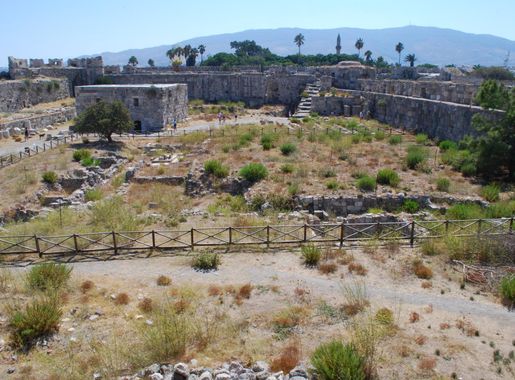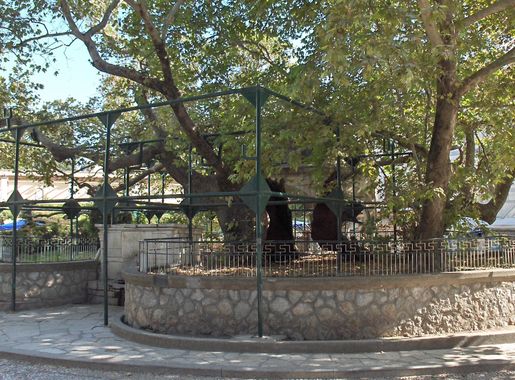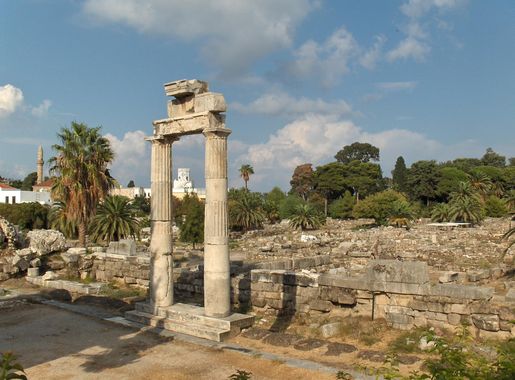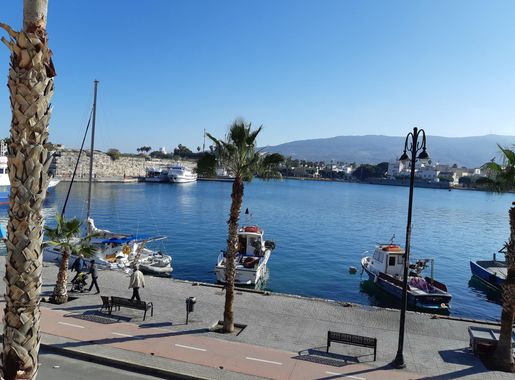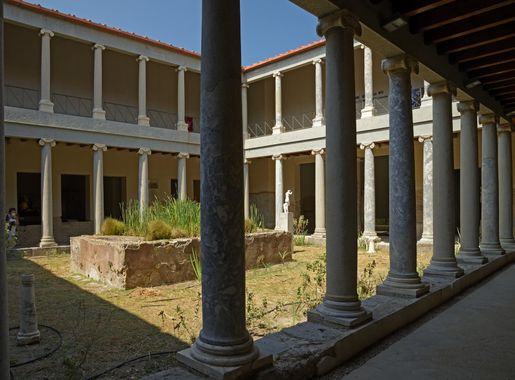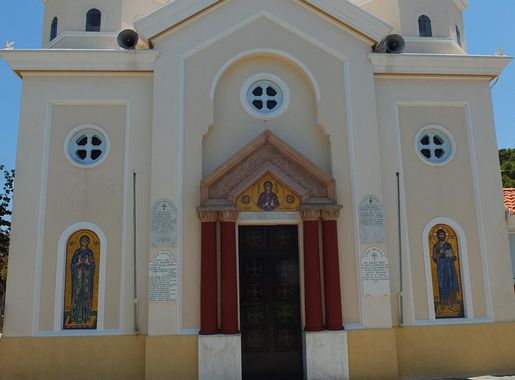
Kos Town: The Jewel of the Dodecanese Islands
Discover the perfect blend of history, culture, and stunning beaches in Kos Town, the vibrant heart of Kos Island in Greece's Dodecanese archipelago.
Kos Town, the capital of Kos Island, is a vibrant blend of the ancient and the modern. Nestled in the southeastern Aegean Sea, this charming town is a must-visit for history buffs and sun-seekers alike. As you stroll through its cobbled streets, you’ll encounter remnants of its rich past, from Hellenistic and Roman ruins to medieval castles and Ottoman mosques. The town is home to the impressive Castle of the Knights, a fortress that stands as a testament to the island's strategic importance in the Aegean. Nearby, the ancient Agora offers a fascinating glimpse into the commercial life of ancient Kos, with well-preserved ruins of temples, columns, and mosaic floors. The Asklepion, an ancient healing center dedicated to the god Asclepius, is another key attraction, offering stunning views of the town and the sea. Kos Town also boasts a lively waterfront lined with cafes, restaurants, and bars, where you can savor local delicacies like fresh seafood and traditional Greek meze. The town's marina is a hub for sailing enthusiasts, while its beaches, such as Lambi and Psalidi, provide perfect spots for relaxation and water sports. Whether you're exploring its historical sites, enjoying its culinary delights, or simply soaking up the sun, Kos Town offers a unique and unforgettable experience.
Local tips in Kos Town
- Visit the Castle of the Knights early in the morning to avoid crowds and enjoy the best views.
- Wear comfortable shoes for walking, as many attractions are within walking distance but involve uneven terrain.
- Try the local specialty, grilled octopus, at one of the waterfront tavernas.
- Carry a hat and sunscreen, especially during the summer months, as the sun can be very strong.
- Consider renting a bicycle to explore the town and nearby beaches, as Kos Town is very bike-friendly.
Kos Town: The Jewel of the Dodecanese Islands
Kos Town, the capital of Kos Island, is a vibrant blend of the ancient and the modern. Nestled in the southeastern Aegean Sea, this charming town is a must-visit for history buffs and sun-seekers alike. As you stroll through its cobbled streets, you’ll encounter remnants of its rich past, from Hellenistic and Roman ruins to medieval castles and Ottoman mosques. The town is home to the impressive Castle of the Knights, a fortress that stands as a testament to the island's strategic importance in the Aegean. Nearby, the ancient Agora offers a fascinating glimpse into the commercial life of ancient Kos, with well-preserved ruins of temples, columns, and mosaic floors. The Asklepion, an ancient healing center dedicated to the god Asclepius, is another key attraction, offering stunning views of the town and the sea. Kos Town also boasts a lively waterfront lined with cafes, restaurants, and bars, where you can savor local delicacies like fresh seafood and traditional Greek meze. The town's marina is a hub for sailing enthusiasts, while its beaches, such as Lambi and Psalidi, provide perfect spots for relaxation and water sports. Whether you're exploring its historical sites, enjoying its culinary delights, or simply soaking up the sun, Kos Town offers a unique and unforgettable experience.
Iconic landmarks you can’t miss
Plane Tree of Hippocrates
Discover the Plane Tree of Hippocrates in Kos, Greece—an ancient symbol of healing and wisdom that offers a tranquil escape amidst rich history.
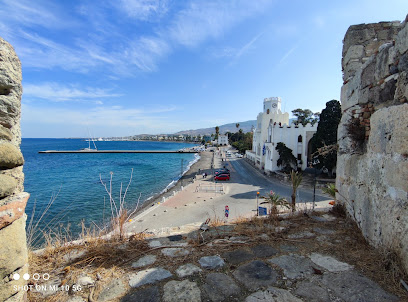
Kos Old Town
Experience the charm of Kos Old Town, where ancient history meets vibrant local culture in a picturesque Greek setting.
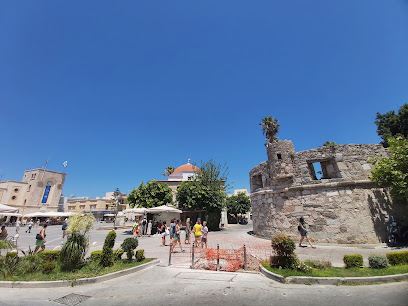
Roman Odeon of Kos
Explore the Roman Odeon of Kos, a captivating historical landmark that offers a glimpse into the island's ancient cultural heritage.
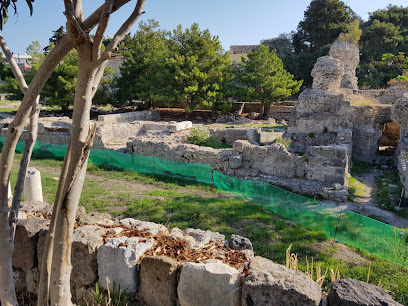
Dolphin Square
Discover the charm of Dolphin Square, a serene tourist attraction on the stunning coastline of Kos, offering relaxation, culture, and Mediterranean beauty.
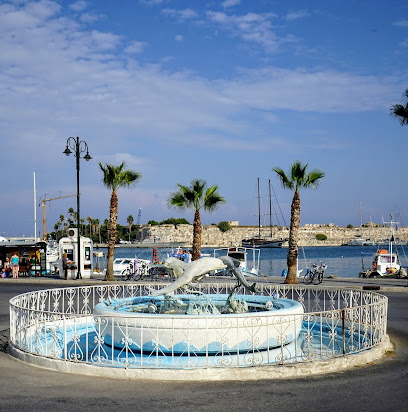
Altar of Dionysus
Discover the Altar of Dionysus in Kos, a historical landmark that embodies the rich heritage of ancient Greece and the worship of its deities.
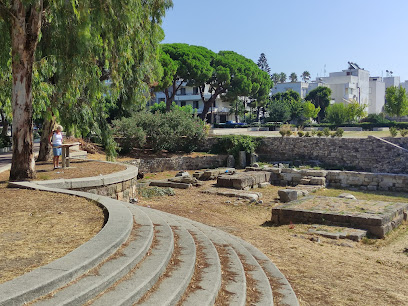
Statue of Hippocrates
Discover the Statue of Hippocrates in Kos, a stunning tribute to the father of modern medicine amidst the island's rich cultural heritage.
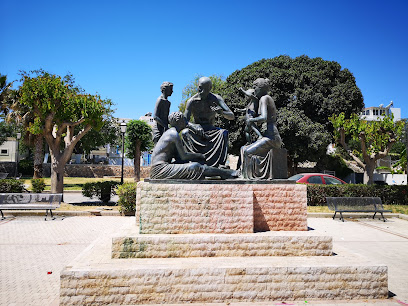
Hospitaller House of Commander Francesco Sans
Explore the Hospitaller House of Commander Francesco Sans, a historical gem in Kos that reveals the rich heritage of the Knights of St. John.
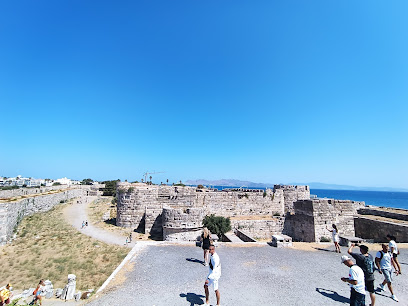
Πηγή Ιπποκράτη
Explore the ancient Hippocrates Tree in Kos, a historic symbol of medicine and a serene spot for relaxation and reflection.
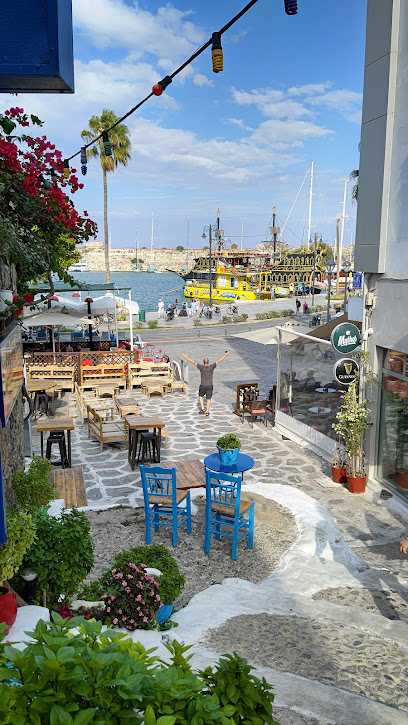
Turkish cemetery
Explore the Turkish Cemetery in Kos, a tranquil historical landmark that reflects the island's rich cultural heritage through its beautifully crafted gravestones.
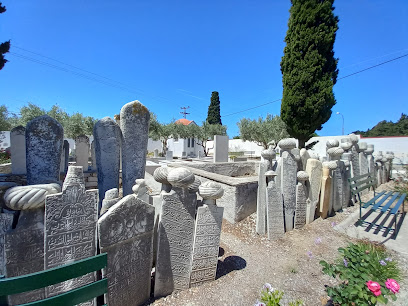
Sanctuary of Aphrodite
Discover the enchanting Sanctuary of Aphrodite on the island of Kos, a captivating historical landmark steeped in mythology and ancient Greek culture.
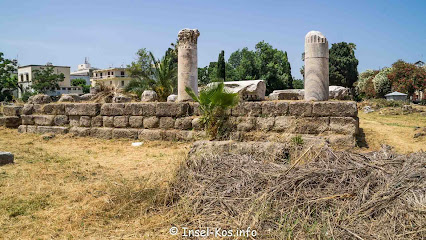
Unmissable attractions to see
Kos Old Town
Discover the enchanting streets of Kos Old Town, where ancient history meets vibrant culture in the heart of Greece.
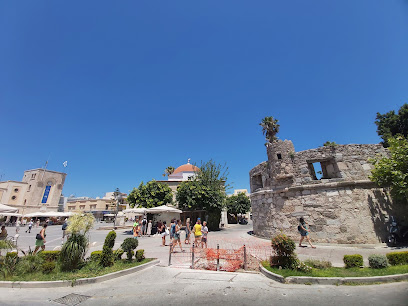
Casa Romana
Discover the ancient elegance of Casa Romana in Kos, a historical landmark showcasing Roman architecture and rich cultural heritage.
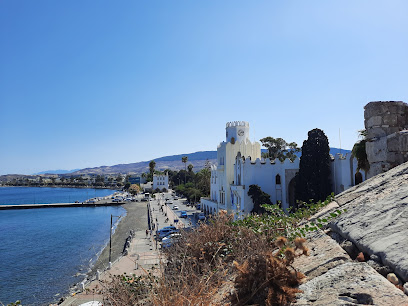
Archaeological Museum of Kos
Explore the rich history of Kos at the Archaeological Museum, showcasing ancient artifacts that tell the stories of past civilizations.
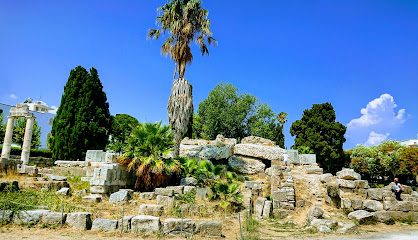
Nerantzia Castle
Explore Nerantzia Castle in Kos, a historic fortress that offers rich history, stunning architecture, and breathtaking Aegean Sea views.
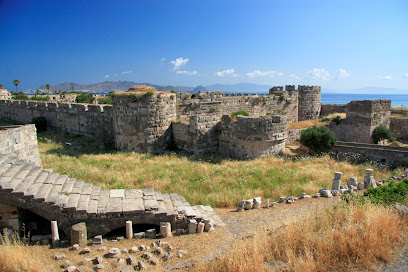
Altar of Dionysus
Explore the Altar of Dionysus in Kos, a historical landmark that reveals the ancient Greek culture and breathtaking views of the Aegean Sea.
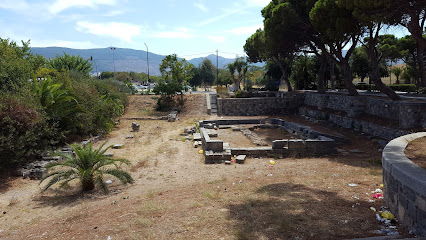
Kos
Explore the historical wonders and stunning beaches of Kos Island, a captivating Greek paradise in the Dodecanese archipelago.

Essential places to dine
Hirodion
Experience authentic Greek cuisine at Hirodion in Kos – where every meal tells a story of tradition and flavor.
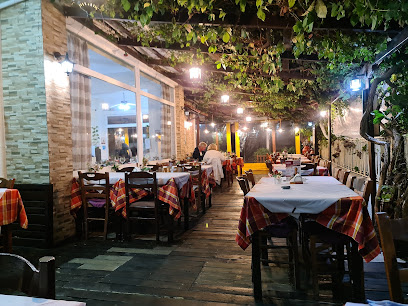
Elia
Discover Elia in Kos for an unforgettable dining experience featuring authentic Greek cuisine and innovative tapas served in a charming setting.
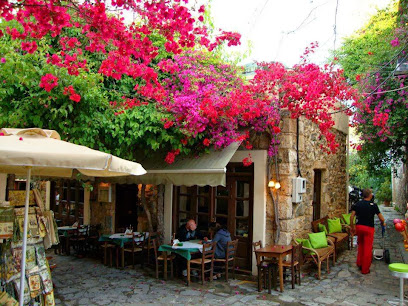
Broadway Restaurant
Experience the unique flavors of Mediterranean cuisine at Broadway Restaurant in Kos - where every dish tells a story.
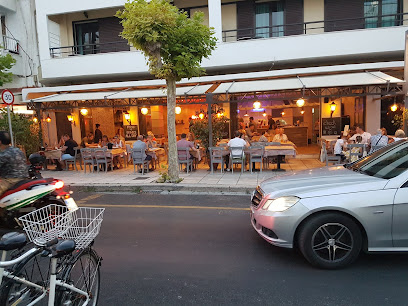
Ambrosia Meze - Restaurant
Discover authentic Greek cuisine at Ambrosia Meze in Kos – where fresh ingredients meet traditional recipes for an unforgettable dining experience.
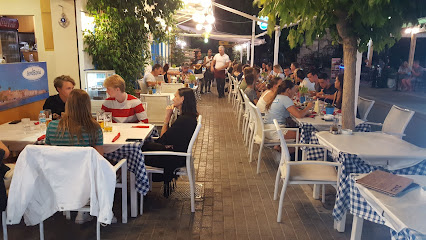
Noah's Ark
Discover authentic Armenian cuisine at Noah's Ark in Kos - where every meal tells a story through rich flavors and tradition.
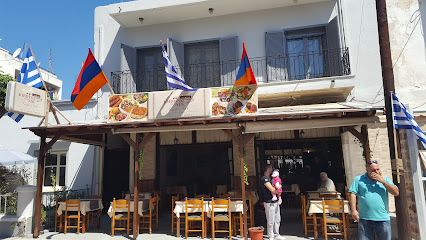
Tarzan beach Restaurant Bar
Experience delightful Mediterranean cuisine at Tarzan Beach Restaurant Bar in Kos - where stunning views meet exceptional service.

Koako Mediterranean taverna
Discover authentic Mediterranean flavors at Koako Taverna in Kos - where every meal tells a story.
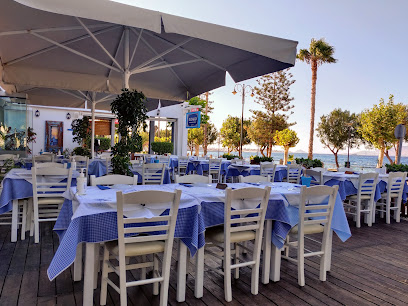
Sunset Taverna
Discover the flavors of Greece at Sunset Taverna in Kos - where every meal is accompanied by breathtaking sunset views.
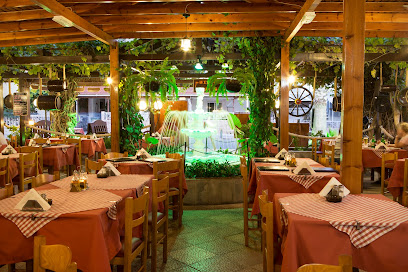
Degli Amici
Experience authentic Italian flavors at Degli Amici in Kos; where every meal is a delightful journey into Italy's culinary traditions.
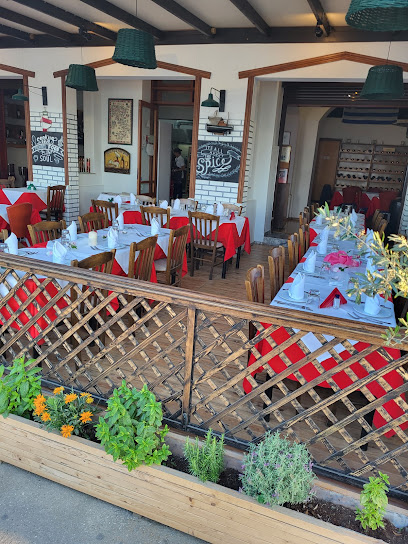
olivity kos
Discover authentic Greek cuisine at Olivity Kos—where fresh ingredients meet modern culinary artistry in a charming setting.
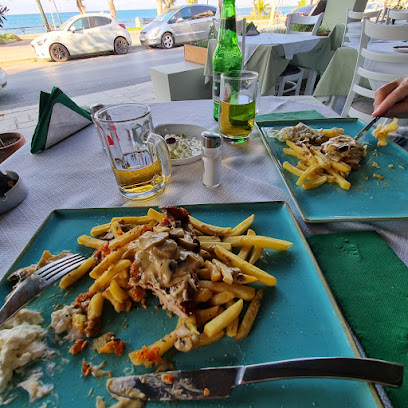
Markets, malls and hidden boutiques
Hondos Center
Explore Hondos Center in Kos for an unparalleled shopping experience, featuring cosmetics, fashion accessories, home goods, and more.

Peppermint Women's Clothing Store Kos
Explore stylish women's apparel and accessories at Peppermint Women's Clothing Store in Kos, the ultimate boutique for fashion lovers.
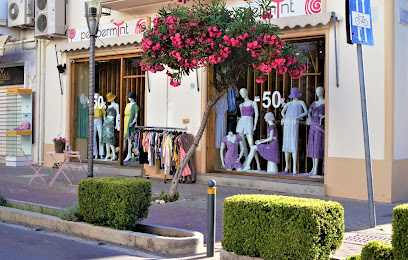
Spatz
Explore Spatz in Kos for stylish clothing and accessories that reflect Mediterranean charm and elegance.

The Imaginarium
Explore The Imaginarium in Kos, where unique gifts and local crafts come together to create unforgettable memories of your travels.
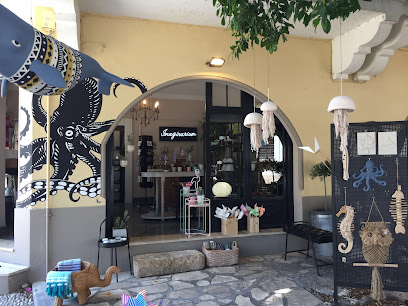
Sisstore
Experience the finest local craftsmanship and unique souvenirs at Sisstore, a charming shopping destination in the heart of Kos, Greece.
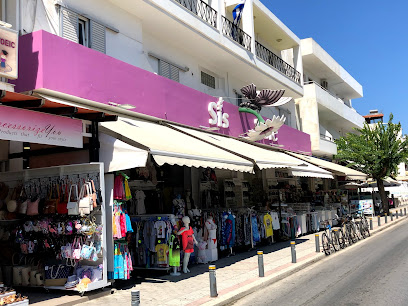
Think Pink, Kos
Explore Think Pink in Kos for stylish fashion accessories that capture the essence of Greek chic. Shop unique pieces that elevate your style.
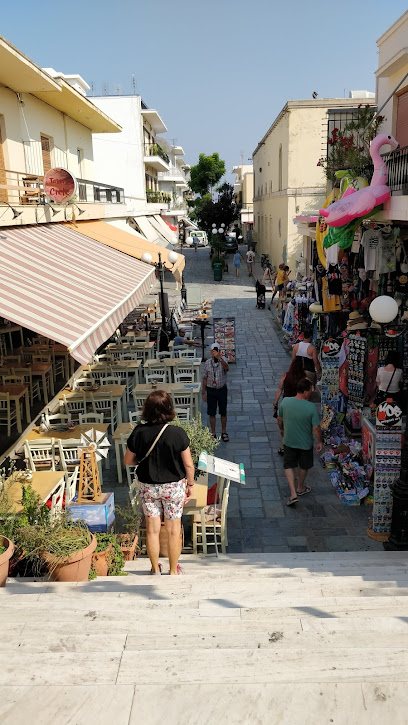
Tshirt Factory
Explore unique T-shirt designs that embody Kos's culture at the Tshirt Factory, located in the heart of Diagora Square.

Ashorte Vintage Treasures
Explore Ashorte Vintage Treasures in Kos for a unique shopping experience filled with timeless vintage clothing and accessories that tell a story.
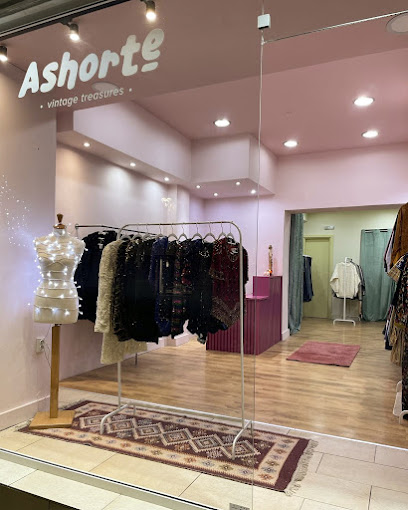
U-Deal Gift Shop
Discover unique treasures and local crafts at U-Deal Gift Shop in Kos, Greece – where every item tells a story.
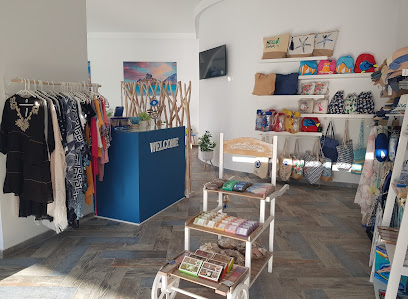
Last Stop
Discover stylish clothing and exceptional service at Last Stop, the premier boutique in Kos for fashion enthusiasts and casual shoppers.
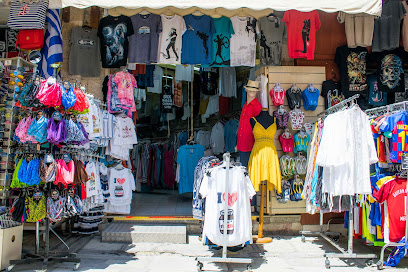
Essential bars & hidden hideouts
Tarzan beach Restaurant Bar
Discover the lively Tarzan Beach Restaurant Bar in Kos, where delicious food meets stunning beachfront views and vibrant nightlife.
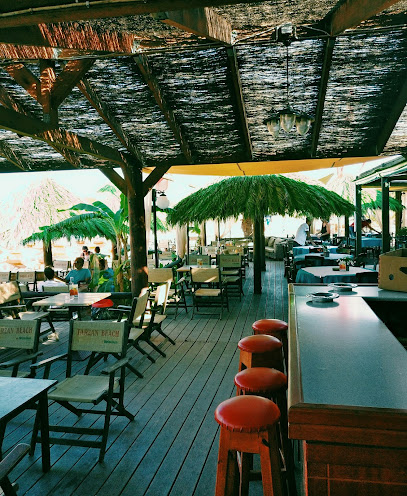
Zero Cafe - Bar - Beer Garden
Discover the lively charm of Zero Cafe - Bar - Beer Garden in Kos, where great drinks and a vibrant atmosphere come together for an unforgettable experience.
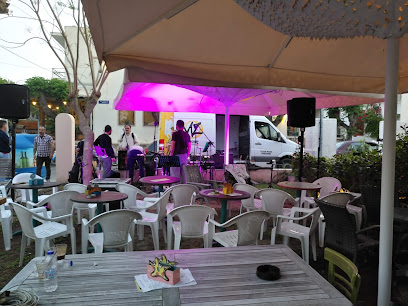
Artemis Heaven Beach-Bar
Experience the vibrant atmosphere and stunning views at Artemis Heaven Beach-Bar, the perfect spot to unwind on Kos Island.
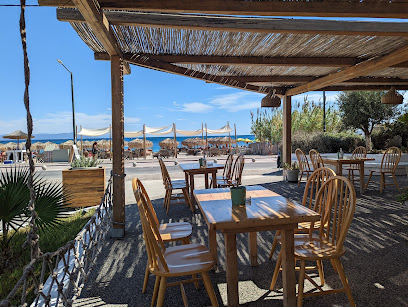
Uniq beach bar & restaurant
Discover the perfect blend of relaxation and flavor at Uniq Beach Bar & Restaurant in Kos, where delicious meals meet stunning sea views.
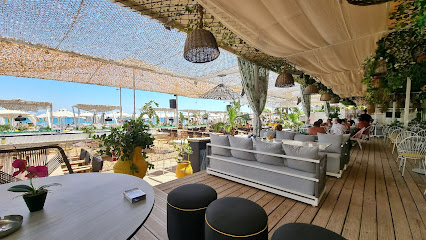
Omega Sky Bar ~ Cocktail Bar Kos
Discover the breathtaking views and exquisite cocktails at Omega Sky Bar, a premier cocktail destination in Kos, Greece.
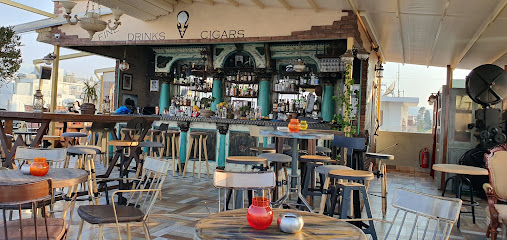
More Cafe Bar
Discover the vibrant atmosphere of More Cafe Bar in Kos, where delicious flavors meet a welcoming ambiance, perfect for relaxation and socializing.
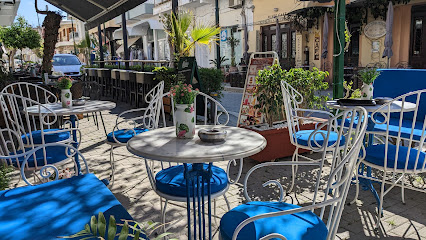
XL cafe & cocktail bar
Discover the lively XL Cafe & Cocktail Bar in Kos, where exquisite cocktails meet a vibrant atmosphere for a memorable night out.
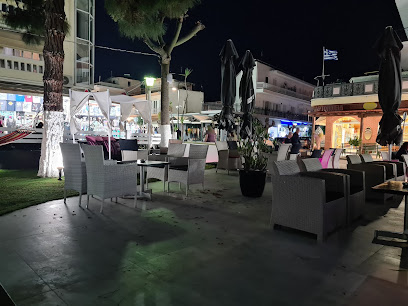
VIE Cafe Bar Kos
VIE Cafe Bar in Kos: A vibrant cocktail haven blending Mediterranean flavors with lively nightlife.
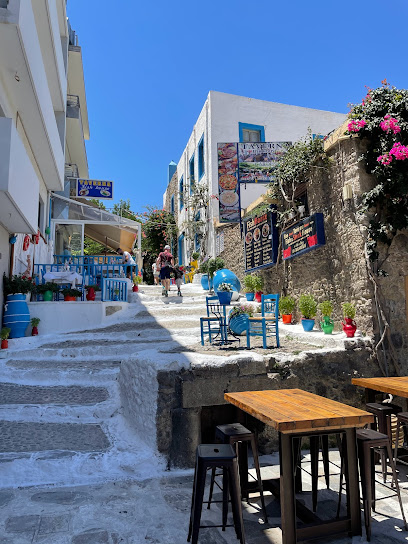
DELON PUB
Experience the vibrant nightlife at Delon Pub in Kos, a lively bar perfect for enjoying drinks and mingling with locals.
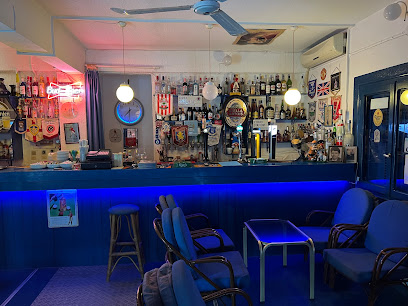
Up Espresso Wine Bar
Experience the best of Kos at Up Espresso Wine Bar, where exquisite wines and artisan coffee meet vibrant atmosphere and local culture.
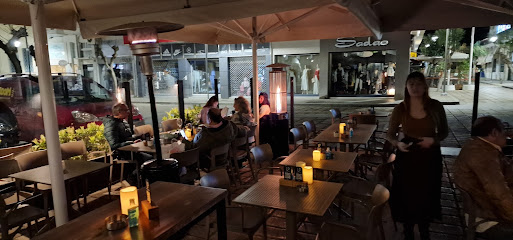
Local Phrases
-
- HelloΓεια σας
[Yah sas] - GoodbyeΑντίο
[Adio] - YesΝαί
[Ne] - NoΌχι
[Ohi] - Please/You're welcomeΠαρακαλώ
[Parakalo] - Thank youΕυχαριστώ
[Efharisto] - Excuse me/SorryΣυγνώμη
[Signomi] - How are you?Πώς είστε;
[Pos iste?] - Fine. And you?Καλά. Εσείς;
[Kala. Esis?] - Do you speak English?Μιλάτε Αγγλικά;
[Milate Anglika?] - I don't understandΔεν καταλαβαίνω
[Den katalaveno]
- HelloΓεια σας
-
- I'd like to see the menu, pleaseΘα ήθελα να δω το μενού, παρακαλώ
[Tha ithela na do to menou, parakalo] - I don't eat meatΔεν τρώω κρέας
[Den troo kreas] - Cheers!ΥΓΕΙΑ!
[Yia] - I would like to pay, pleaseΘα ήθελα να πληρώσω, παρακαλώ
[Tha ithela na plirosa, parakalo]
- I'd like to see the menu, pleaseΘα ήθελα να δω το μενού, παρακαλώ
-
- Help!Βοήθεια!
[Vothia!] - Go away!Φύγε!
[Fige!] - Call the Police!Καλέστε την Αστυνομία!
[Kaleste tin Astinomia!] - Call a doctor!Καλέστε γιατρό!
[Kaleste yatro!] - I'm lostΈχω χαθεί
[Eho hathi] - I'm illΕίμαι άρρωστος
[Ime arrostos]
- Help!Βοήθεια!
-
- I'd like to buy...Θα ήθελα να αγοράσω...
[Tha ithela na agoraso] - I'm just lookingΑπλά κοιτάω
[Apla kitao] - How much is it?Πόσο κοστίζει;
[Poso kostizi?] - That's too expensiveΑυτό είναι πολύ ακριβό
[Afto ine poli akribo] - Can you lower the price?Μπορείτε να μειώσετε την τιμή;
[Borite na meiosete tin timi?]
- I'd like to buy...Θα ήθελα να αγοράσω...
-
- What time is it?Τι ώρα είναι;
[Ti ora ine?] - It's one o'clockΕίναι μία ώρα
[Ine mia ora] - Half past (10)Μισή (10)
[Misi (dekka)] - MorningΠρωί
[Proi] - AfternoonΑπόγευμα
[Apoyevma] - EveningΒράδυ
[Vradi] - YesterdayΧθες
[Hthes] - TodayΣήμερα
[Simera] - TomorrowΑύριο
[Avrio] - 1Ένα
[Ena] - 2Δύο
[Dio] - 3Τρία
[Tria] - 4Τέσσερα
[Tessera] - 5Πέντε
[Pente] - 6Έξι
[Exi] - 7Επτά
[Epta] - 8Οκτώ
[Okto] - 9Εννιά
[Ennia] - 10Δέκα
[Deka]
- What time is it?Τι ώρα είναι;
-
- Where's a/the...?Πού είναι ένα/το...;
[Pou ine ena/to...?] - What's the address?Ποια είναι η διεύθυνση;
[Pia ine i diefthinsi?] - Can you show me (on the map)?Μπορείτε να μου δείξετε (στο χάρτη);
[Borite na mou dixete (sto charti)?] - When's the next (bus)?Πότε είναι το επόμενο (λεωφορείο);
[Pote ine to epomeno (leoforeio)?] - A ticket (to ....)Ένα εισιτήριο (προς ....)
[Ena isitirio (pros ....)]
- Where's a/the...?Πού είναι ένα/το...;
History of Kos Town
-
Kos Town's history dates back to ancient Greece, around the 3rd millennium BC. The island is famously known as the birthplace of Hippocrates, the father of medicine. The Sanctuary of Asclepius, dedicated to the healing god, became a renowned center for medical practice. Here, pilgrims sought cures for ailments, and it played a pivotal role in establishing Kos as a hub for medical knowledge and education.
-
During the Hellenistic period, particularly under the rule of the Ptolemies, Kos Town flourished as an important cultural and commercial center. The Romans later adopted the island, integrating it into their empire, which led to the construction of impressive public buildings, including the Odeon and the Agora, showcasing the town's significance in trade and politics.
-
In 1309, the Knights of St. John captured Kos and fortified the town, building imposing structures such as the Castle of the Knights. This period saw the construction of defensive walls and the establishment of a military presence, which transformed Kos into a strategic outpost in the Aegean, influencing both its architecture and local governance.
-
The Ottoman Empire took control of Kos in 1522, leading to a period marked by cultural syncretism. The town saw the construction of mosques, baths, and markets, blending Islamic and local traditions. The influence of Ottoman architecture is evident in structures like the Defterdar Mosque, showcasing the diverse cultural heritage of Kos Town.
-
Following the Italo-Turkish War, Kos was ceded to Italy in 1912. The Italian administration initiated significant urban development, modernizing infrastructure and public services. This era left a lasting impact on the town's architecture, with many buildings reflecting Italian neoclassical styles, and fostering an environment that encouraged tourism, which continues to thrive today.
-
After World War II, Kos was integrated into Greece in 1947. The post-war period saw a dramatic rise in tourism, transforming Kos Town into a popular destination for travelers. The preservation of its archaeological sites and the promotion of its rich history have played a crucial role in establishing Kos as a cultural and historical landmark in the Aegean.
Kos Town Essentials
-
Kos Town is accessible via the Kos International Airport (Hippocrates Airport), located approximately 25 kilometers away. Regular bus services connect the airport to Kos Town, taking about 30 minutes. Ferries from other Greek islands, such as Rhodes and Kalymnos, also dock at the main port of Kos Town. Within the island, local buses run frequently between different neighborhoods and popular tourist spots.
-
Kos Town is compact and pedestrian-friendly, making it easy to explore on foot. Local buses are available for longer distances, and taxis are reasonably priced for short trips. Bicycles are a popular mode of transport, with many rental shops available throughout the town. Consider renting a scooter for a more adventurous way to explore the island.
-
Kos Town is generally safe for tourists, with low crime rates. However, like any tourist destination, it's important to stay alert. Avoid poorly lit areas at night and be cautious of pickpockets in crowded areas, particularly near markets and tourist attractions. There are no specific high-crime areas, but maintaining awareness is advisable.
-
In case of an emergency, dial 112 for police, fire, or medical assistance. The local hospital is situated near the center of Kos Town, and pharmacies are readily available for minor health issues. It's recommended to have travel insurance that covers medical emergencies.
-
Fashion: Do dress modestly, especially when visiting churches and monasteries. Avoid overly revealing clothing. Religion: Do respect local customs, removing hats and covering shoulders when entering religious sites. Public Transport: Do be courteous to fellow passengers. Don't eat or drink while using public transport. Greetings: Do greet locals with a friendly 'Kalimera' (Good morning). A handshake is customary. Eating & Drinking: Do try local dishes, especially seafood and traditional Greek salads. Don’t waste food; it is considered disrespectful.
-
To experience Kos Town like a local, visit the bustling market in the Old Town for fresh produce and artisan goods. Engage with locals at small tavernas to learn about traditional recipes. Explore the less touristy beaches like Agios Fokas for a more authentic experience. Consider renting a bicycle to navigate the scenic coastal paths and enjoy the island's natural beauty.
-
When dining, it is polite to wait for the host to start eating before you do. Tipping is customary in restaurants, typically around 10%. Always greet shopkeepers upon entering and thank them when leaving, as this is considered good manners.
-
Kos Town enjoys a Mediterranean climate with hot, dry summers and mild winters. The best time to visit is from late spring to early autumn (May to September) when the weather is warm and ideal for beach activities. Be prepared for high temperatures in July and August, and bring sun protection.

